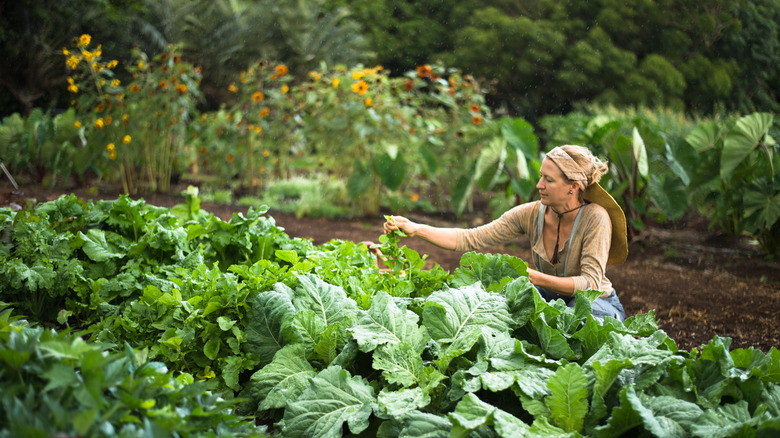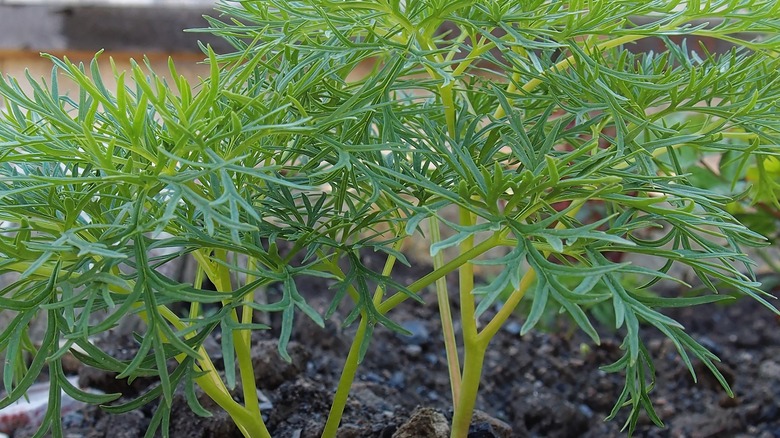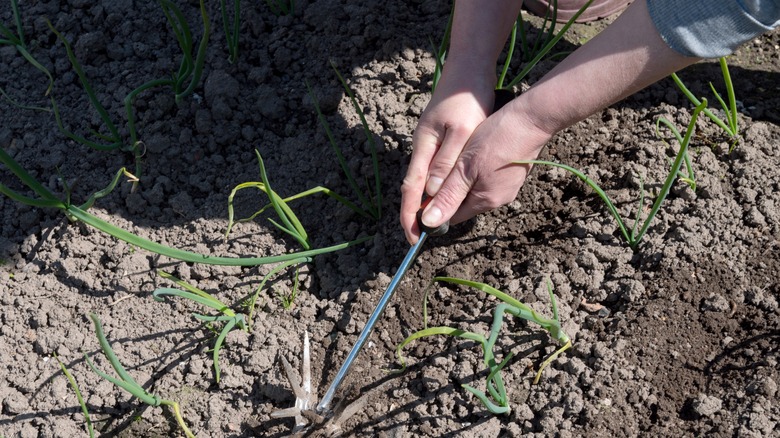You Should Be Worried If You See This Weed Growing Near Your Crops
If you're a farmer or a gardener, you know that weeds are more than just a nuisance; they can pose serious threats to your crops. One weed that causes many headaches is Kochia or Bassia scoparia. Kochia is a resilient weed that typically grows in a bushy, upright form with dense, rounded foliage. Its small, narrow, lance-shaped leaves are green but can turn reddish, and the plant produces inconspicuous green flowers clustered in cylindrical spikes. As it matures, the seed head becomes prominent and can spread easily, making Kochia a particularly aggressive and problematic weed in agricultural settings. It's also highly competitive and can adapt to challenging environments like drought or poor soil fertility. As the pesky plant grows fast and tough, it can take over your fields in no time, stealing nutrients and water from your crops.
Kochia can also really hit you where it hurts –- your wallet. If you see it sprouting up near your crops, you must prevent the weed from taking over your lawn or field. Ignoring it can lead to big yield losses and higher costs to get it under control. Once Kochia establishes itself, it's hard to get rid of. What's worse, this weed has developed resistance to many herbicides, which makes controlling it even more difficult.
The economic impact of kochia on crops
When Kochia invades your fields, it competes with your crops for vital resources like sunlight and water. For crops like corn and soybean, Kochia's presence can be particularly damaging. Not only can it reduce your crop yields, but it can also mess up your harvesting, which could lead to even more losses. According to Take Action, a farmer resource program from the United Soybean Board, unchecked issues can reduce yields by as much as 70% for farmers. If you're running a small-scale operation instead of just a home garden, that's a huge hit to your revenue.
On top of yield losses, managing Kochia can cost you a pretty penny. You'll likely need to spend more on herbicides, and since Kochia is resistant to many of them, you might have to buy more expensive or multiple types of herbicides. This bumps up your production costs, cutting into your profits. In most cases, you also must use integrated weed management (IWM) strategies. These strategies can be time-consuming and require a lot of effort, combining chemical, mechanical, and cultural methods of weed control.
Strategies for managing kochia infestations
The key to keeping Kochia under control is catching it early and acting fast. Make a habit of checking your soil regularly, especially when your crops are just starting to grow. Look out for Kochia's small, narrow, green, or slightly hairy leaves and its bushy look. Focus on spots where weeds usually pop up, like field edges and disturbed soil. If you spot it early, you can pull it out by hand, roots and all, or mow them out in areas where they are taking over.
Integrated weed management (IWM) is your best bet for controlling Kochia. As mentioned, IWM uses a mix of chemical, mechanical, and cultural practices. For chemical control, make sure to use herbicides with different modes of action to avoid resistance. Colorado State University reveals that herbicides, such as fluroxypyr (available as Vista and Starane), dicamba, and glyphosate work well for controlling Kochia. Mechanical methods like tillage can also disrupt its growth and reduce its seed bank in the soil. And, of course, don't forget about cultural practices like rotating your crops and planting cover crops. These can make your fields less friendly for Kochia. Crop rotation can break the weed's life cycle, gradually reducing its population. Meanwhile, you can sow cover crops known for suppressing weeds in the fall to outcompete Kochia for resources, effectively holding back its growth and production.


